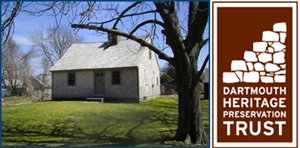
AH13
This unit sampled a mid-20th century burned trash feature in its upper levels. Interesting finds included a blue gilded plate (broken into many pieces!), a large caliber shell casing (WWII souvenir?), and what looks like a home-made machete. We finished excavating through the subsoil of this unit this week. A big part of any excavation is record keeping. As with any finished unit, we took final photographs of the bottom and all the sides (or walls) of this square hole. We also drew the final north wall profile, which shows the different soil layers more clearly than any photograph could. Last year's AH10 unit, located just to the north of AH13, ended on several very large rocks; one of which took up over half the unit! We wanted to make sure this unusual concentration of unusually large rocks was a natural result of glacial activity, and it did not result from human manipulation in either historic or prehistoric times. In AH10, there were more large rocks, especially where the subsoil met the substratum (glacial layer). But these rocks were not arranged in any clear pattern and were set into what looked like undisturbed subsoils. We now have clear evidence that they are not the result of human activity.

AH16
This unit, located behind the 20th-century shed, was also finished this week.
 AH17
AH17Unit AH17 was an extension of AH18, located adjacent to an old cellar entrance on the house's north facade. Finds from AH17 were much like those from AH18. AH17 provided additional artifacts that will help us to figure out when the entrance was filled in. This entrance is a bit confusing, as there are stones outside the house foundation (shown here) that look like retaining walls to a cellar entrance. But the house foundation itself does not look modified in any way. If this were a coal chute or similar, we would have expected to find much evidence of coal fragments and dust nearby, but there wasn't any. We hope examination of the artifacts and a study of house occupants will help to explain this feature.
AH19
We began and finished excavating AH19, our final unit of the season! Thanks to all the volunteers or doing such a careful and expeditious job. AH19 is located near the front (west) facade of the 20th-century shed. The unit yielded many architectural fragments from its topmost layers, but as excavators dug deeper, these gave way to many ceramic fragments. This shift in artifact types and frequencies is a sign that disposal patterns and yard use changed over time. Compared with other units on site, AH19 had almost no subsoil - old topsoils that accumulated after the last Ice Age and have been depleted over time. This fact supports the idea that the back yard had some of its soils modified and removed at some point in time.



